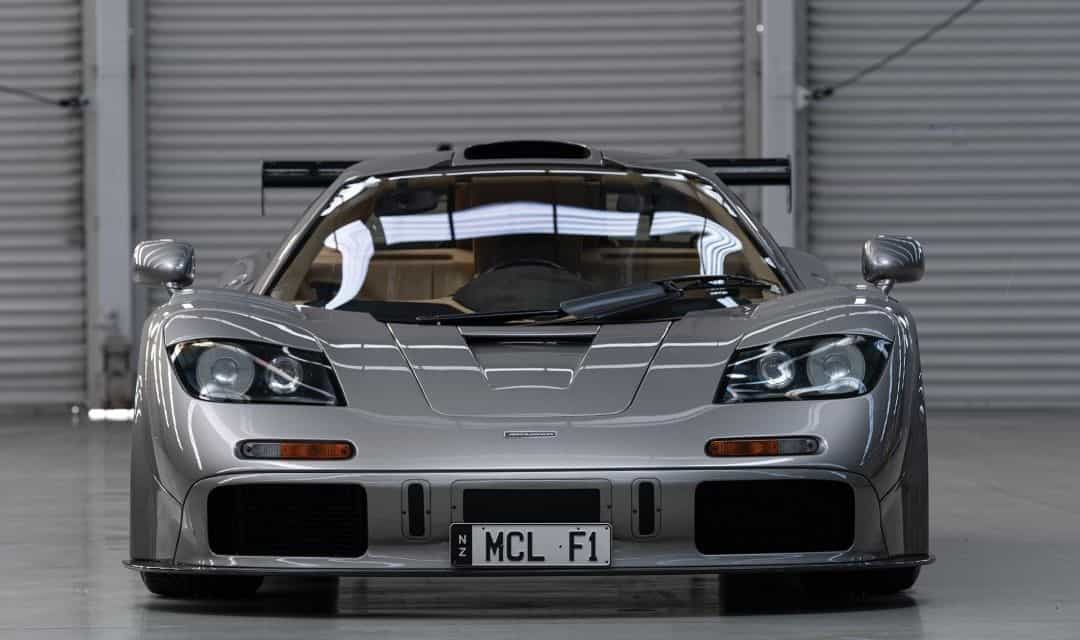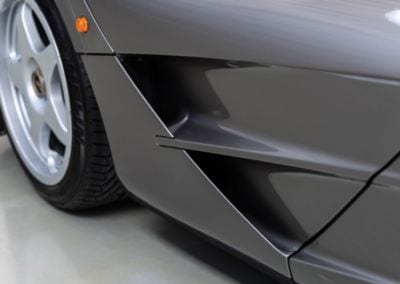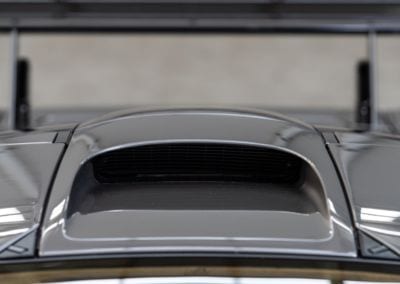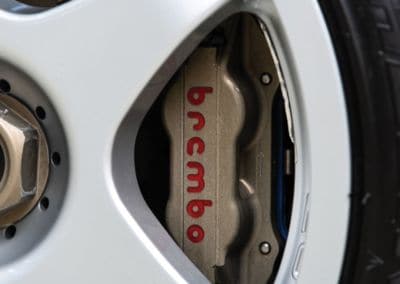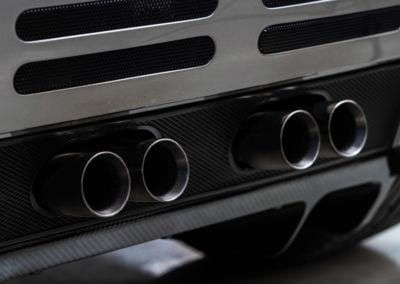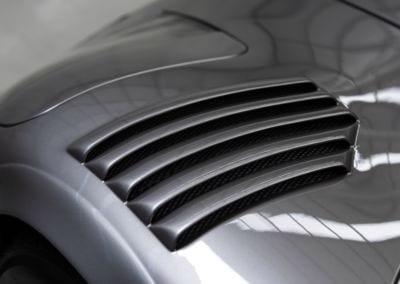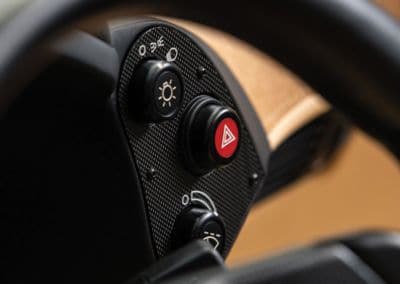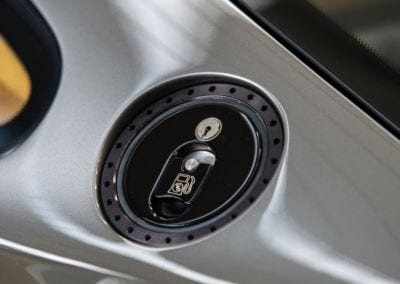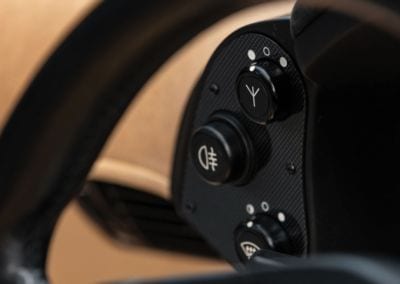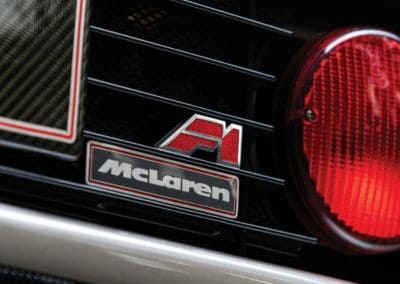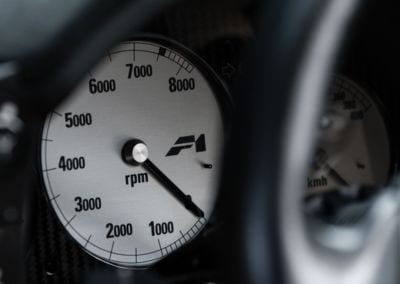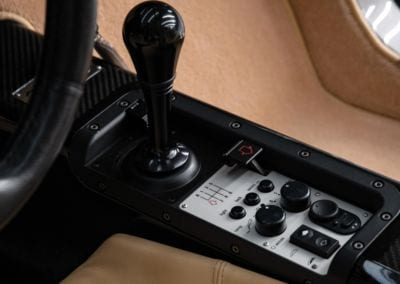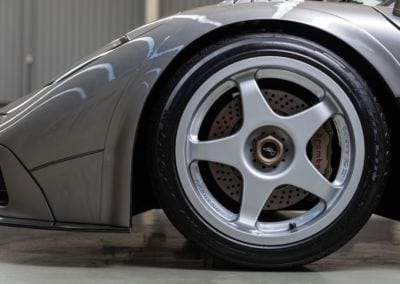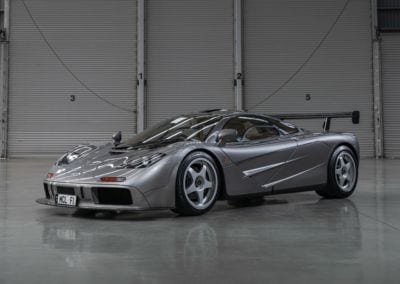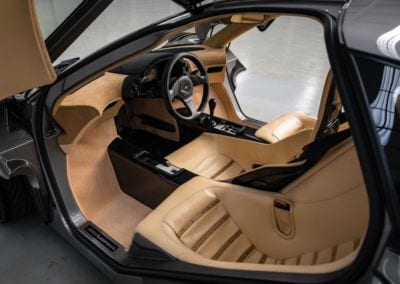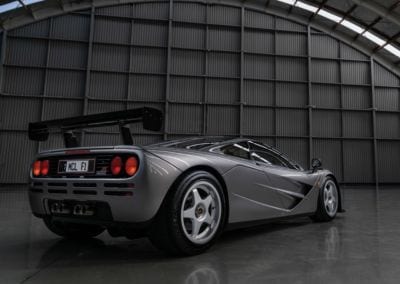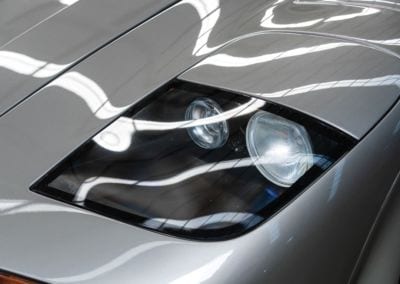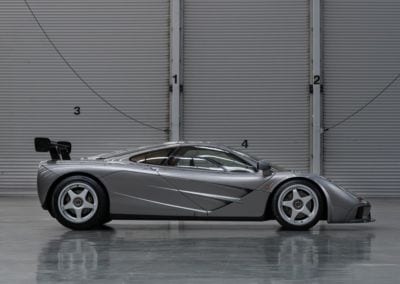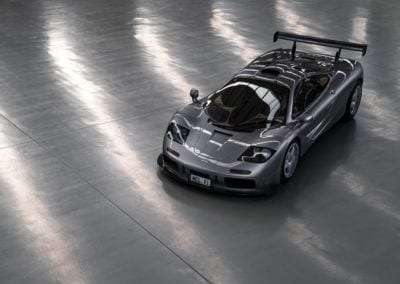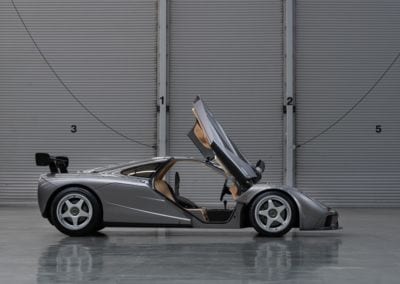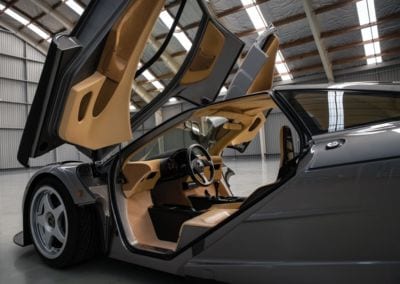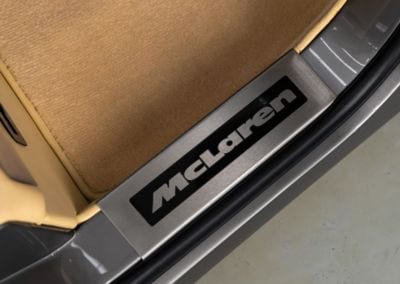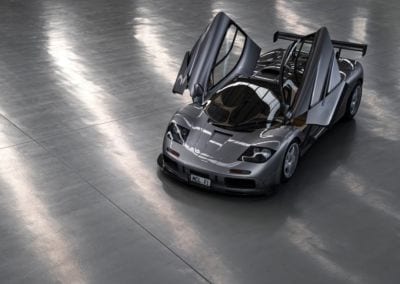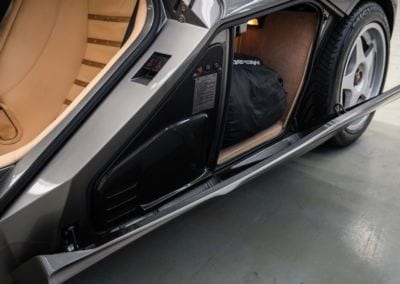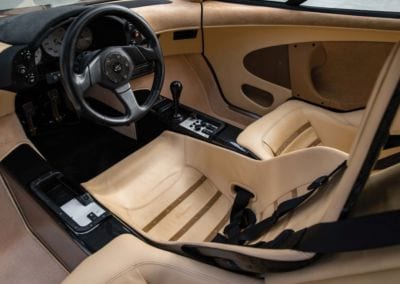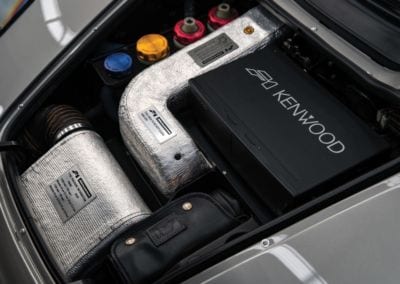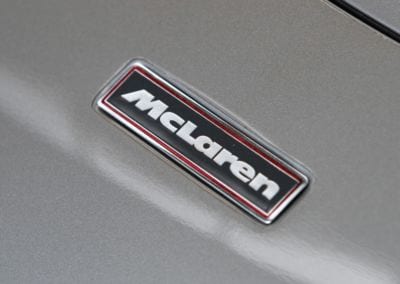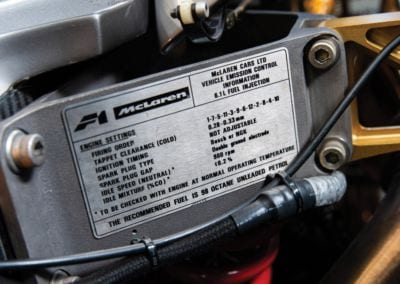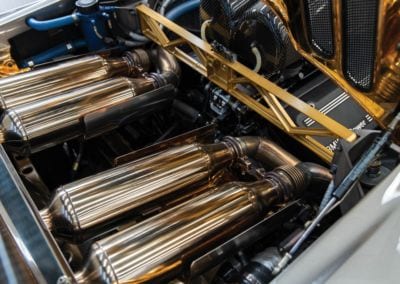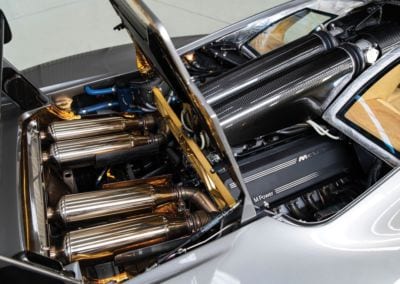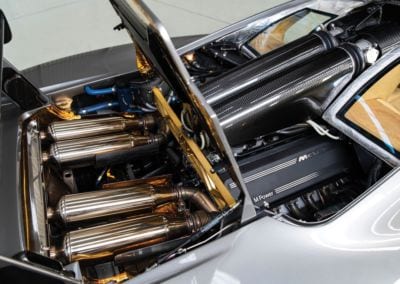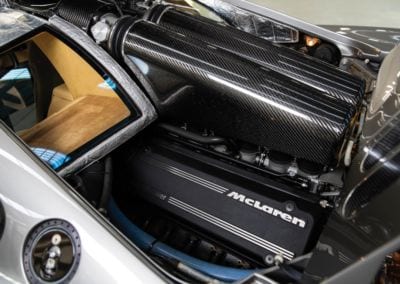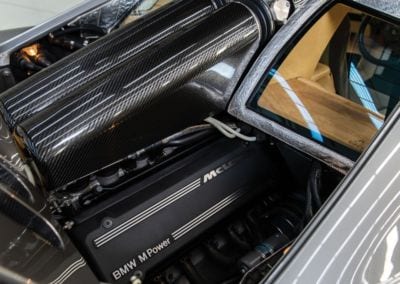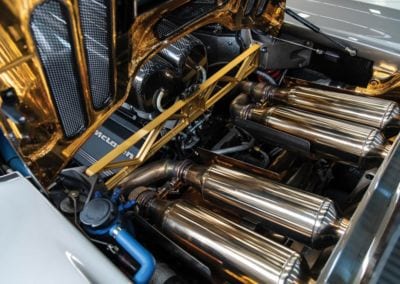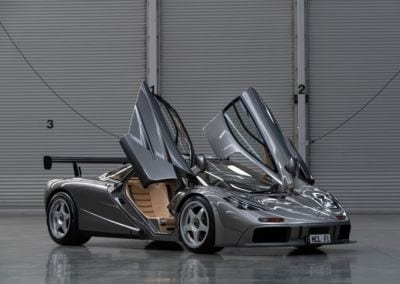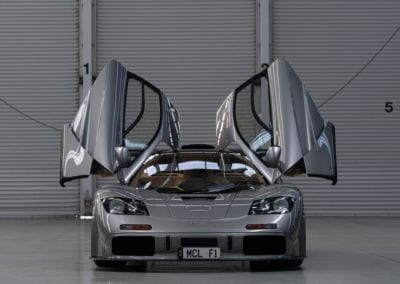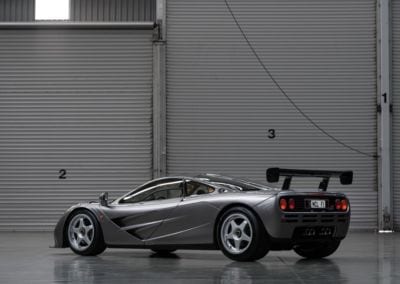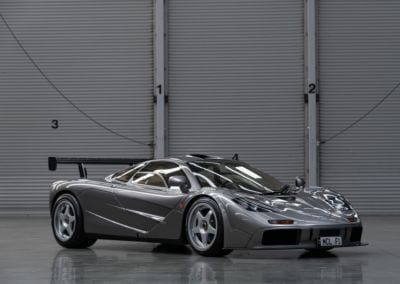Introduction
As a kid, I vividly remember standing outside the McLaren showroom on Park Lane, pressing my face against the glass to catch a glimpse of the mythical McLaren F1. There it stood—sleek, silent, and impossibly exotic—commanding attention without making a sound. To my young mind, it wasn’t just a car. It was a spaceship, a moving sculpture, the embodiment of speed and style.
Even then, I understood I was looking at something special, but I couldn’t yet comprehend why it was revered as the best car in the world. How could something with wheels feel so unreachable, so magical? What made it worthy of such awe? As time passed and I delved deeper into the world of cars, I learned that the F1 wasn’t just hype—it was a masterclass in design, engineering, and ambition.
Today, the McLaren F1 is widely considered the pinnacle of analog automotive engineering. Conceived by Formula 1 design legend Gordon Murray and brought to life with help from BMW’s M Division, the F1 shattered conventions and redefined what a road car could be. It wasn’t built for the track—though it dominated there too. It wasn’t meant to beat lap records—though it did. It was made to be the greatest driver’s car ever, and for many, it still is.
In this article, we’ll explore what makes the McLaren F1 so legendary—from its groundbreaking design and technical innovations to its record-breaking performance and enduring cultural influence. We’ll uncover the details that made it a marvel in its time and explain why, decades later, it’s still the car against which all others are measured.

History & Heritage of the McLaren F1
The McLaren F1’s story began in the late 1980s when renowned automotive designer Gordon Murray envisioned creating the ultimate road car. Having already established his reputation in Formula 1 through innovative designs for teams such as Brabham and McLaren, Murray sought to channel his racing expertise into crafting a vehicle that would set unprecedented standards in performance, innovation, and design. Thus began a groundbreaking journey that would forever change automotive history.
From the outset, Murray’s goal was clear: he wanted to build not merely a fast car but the best road car ever made, blending race-inspired engineering with practical usability. This vision materialized under McLaren Automotive, a newly established division of the McLaren Group that Murray himself played a crucial role in forming. The McLaren F1 thus became the flagship product, embodying the ultimate expression of McLaren Automotive heritage and racing pedigree.
Development of the F1 was uncompromising. Murray insisted on using advanced materials and technologies, many of which had never been used before in a production car. The result was a monocoque chassis made entirely of carbon fiber—a revolutionary technique at the time that drastically reduced weight and improved structural rigidity. Another pioneering aspect was its aerodynamics, meticulously designed to ensure stability at extremely high speeds, combined with the iconic gold-lined engine compartment used for optimal heat insulation.
The McLaren F1 marked a pivotal shift in supercar history. Prior to its launch, supercars were primarily focused on raw speed and exclusivity, often sacrificing comfort and practicality. The F1, however, redefined this notion. Its groundbreaking three-seat layout with a central driving position provided unparalleled visibility and a unique driving experience, setting new standards for ergonomics and usability in supercars.
Its significance to McLaren Automotive’s legacy cannot be overstated. The F1 firmly positioned McLaren as not just a racing powerhouse but also a serious contender in the high-performance luxury automotive market. It laid the foundation for all subsequent McLaren road cars, influencing their design, engineering philosophy, and the relentless pursuit of perfection.
Today, the McLaren F1 remains an icon, revered not only for its remarkable achievements but also as a testament to the extraordinary vision and ingenuity of Gordon Murray and McLaren Automotive. It is more than an iconic supercar—it is a lasting legacy that continues to inspire generations of automotive enthusiasts around the globe.

Exterior Styling and Aerodynamics
The McLaren F1’s exterior design is the epitome of functional beauty, expertly crafted to combine stunning aesthetics with groundbreaking aerodynamic efficiency. Designed by Peter Stevens in collaboration with Gordon Murray, the car’s distinctive, purposeful appearance was shaped not just by artistic vision, but primarily by the demands of achieving unprecedented speed and handling.
Central to the F1’s groundbreaking approach was its carbon fiber construction. At the time, carbon fiber was predominantly reserved for Formula 1 and aerospace applications due to its exceptional strength-to-weight ratio. By adopting this advanced material for the entire chassis and body, McLaren significantly reduced the F1’s weight, enhancing its performance, handling agility, and fuel efficiency. The result was a road car that weighed just over 1,100 kg, dramatically lighter than its competitors.
A unique and iconic feature of the F1 is its gold-lined engine bay. Gold, renowned for its superior heat-reflective properties, was strategically applied to the engine compartment to effectively manage the extreme temperatures generated by the powerful BMW V12 engine. This innovative solution exemplifies the car’s meticulous attention to detail and performance-driven design.
Aerodynamics played a crucial role in the McLaren F1’s design. Every curve, contour, and air intake was meticulously engineered to optimize airflow and reduce drag. The car’s sleek silhouette, low front end, integrated rear spoiler, and carefully designed underbody diffusers contribute to its exceptional high-speed stability. Even the positioning of the wing mirrors was carefully calculated to minimize turbulence and aerodynamic drag.
Weight-saving was another essential design principle that guided the F1’s exterior styling. Components such as the wheels, suspension parts, and even the toolkit were specially designed using lightweight materials like magnesium, aluminum, and titanium. This uncompromising focus on reducing weight not only improved acceleration and handling but also set new industry benchmarks.
The McLaren F1’s exterior design and aerodynamic achievements have profoundly influenced subsequent generations of supercars and hypercars. Its pioneering use of carbon fiber, innovative heat management solutions, and aerodynamic perfection continue to inspire automotive design philosophy, setting a lasting legacy that still resonates within the industry today.
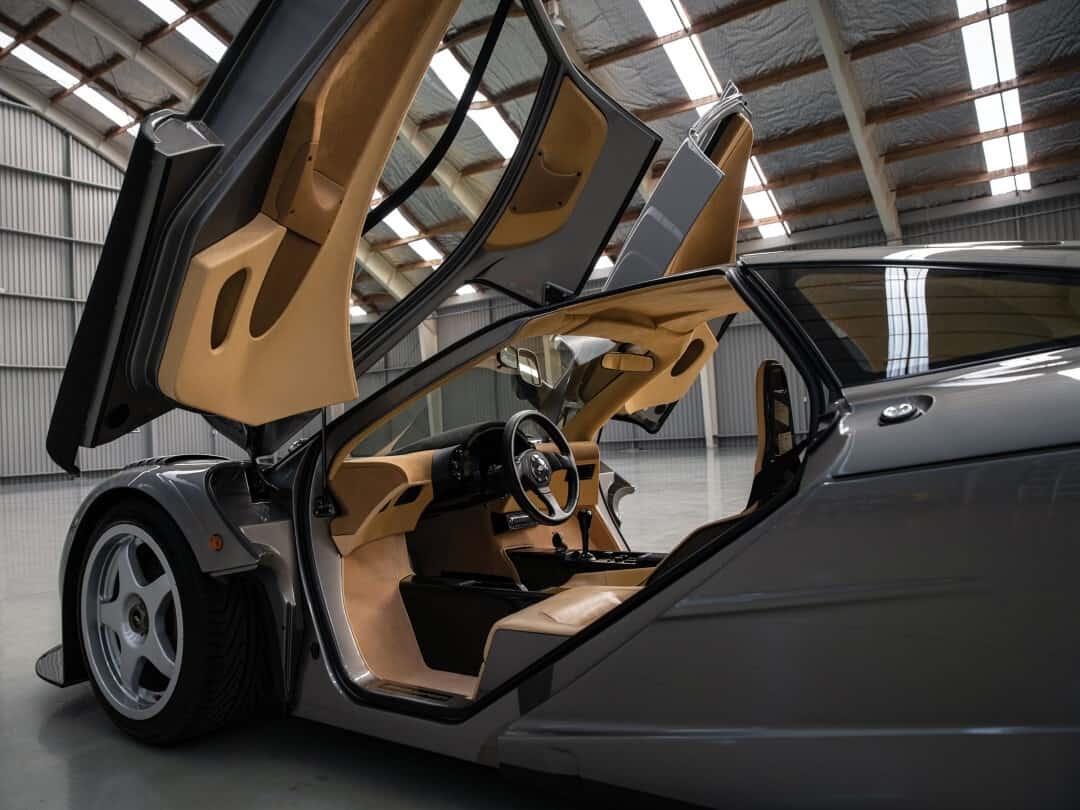
Interior & Unique Driving Position
Stepping inside the McLaren F1 is akin to entering a cockpit rather than a conventional car cabin, instantly highlighting its unique three-seat configuration and central driving position. Conceived by Gordon Murray, this layout places the driver front and center, flanked slightly behind by two passenger seats. This distinctive arrangement ensures optimal visibility, unparalleled control, and a driving experience unlike any other supercar.
The central driving position is more than just a novelty—it’s a triumph of ergonomics and engineering. Murray’s idea stemmed from his dissatisfaction with traditional offset driving positions, especially in performance cars where precision is everything. Sitting at the car’s center of gravity not only improves weight distribution but gives the driver unmatched sightlines and symmetry when cornering. The result is a natural sense of balance, as if the car is pivoting around you.
Entering the cabin involves sliding in through dihedral doors that lift upward and outward—an iconic McLaren signature. Once seated, the low, reclined posture and minimalist dashboard put everything within perfect reach. There’s no flashy digital display or touch screen—just analog dials, a purpose-built gauge cluster, and tactile switchgear, all underscoring the F1’s no-nonsense approach to performance.
Premium materials such as hand-stitched Connolly leather, Alcantara, and carbon fiber reinforce the F1’s blend of luxury and lightweight construction. Each seat was custom-fitted to the original owner’s body type and preferences, and every cabin detail—right down to the gear shifter position—was designed for maximum driver comfort without compromising function.
Despite being built in the early 1990s, the F1 offered an interior environment that was both comfortable and user-friendly. Passengers benefited from more space than in most supercars, and soundproofing was effective enough to allow for relaxed conversations at speed. A lightweight air conditioning system and bespoke Kenwood sound system were included not as afterthoughts, but as tailored features to complement the F1’s GT credentials.
Practicality was also thoughtfully addressed, featuring custom-fitted luggage compartments and innovative storage solutions in the side pods, making the McLaren F1 as suitable for grand touring as for spirited drives.
Altogether, the interior of the McLaren F1 showcases the same brilliance and obsessive attention to detail found in its engineering. It’s a rare example of a supercar where driver comfort and involvement were given as much attention as outright performance, creating an interior experience that remains as iconic as the car’s legendary speed.

Engine and Technical Specifications
At the core of the McLaren F1’s legendary performance lies its remarkable powerplant—a naturally aspirated 6.1-liter V12 engine developed and built by BMW’s M division. Known internally as the BMW S70/2, this engine was meticulously engineered to meet Gordon Murray’s demanding specifications for lightweight construction, exceptional responsiveness, and unprecedented power output.
Producing a formidable 627 horsepower and 479 lb-ft of torque, the engine was capable of launching the lightweight F1 from 0-60 mph in an astonishing 3.2 seconds, and onward to a record-breaking top speed of 240 mph, which stood as the world record for a production road car for over a decade. What made this engine particularly special was its naturally aspirated nature, providing instantaneous throttle response and a linear power delivery unmatched by contemporary turbocharged rivals.
The compact size of the engine—less than 600mm in length—allowed for tighter packaging and better weight distribution. Initially, McLaren approached Honda for an engine, but the collaboration didn’t materialize. BMW accepted the challenge and delivered a unit so compact, powerful, and reliable that it became the heart of the F1’s legend.
The engine’s bay was lined with gold foil to manage heat more effectively—another example of the lengths McLaren went to for perfection. This level of detail, along with the use of lightweight materials, manual transmission, and a lack of electronic interference, made the F1 a technical marvel of its time and still a benchmark today.
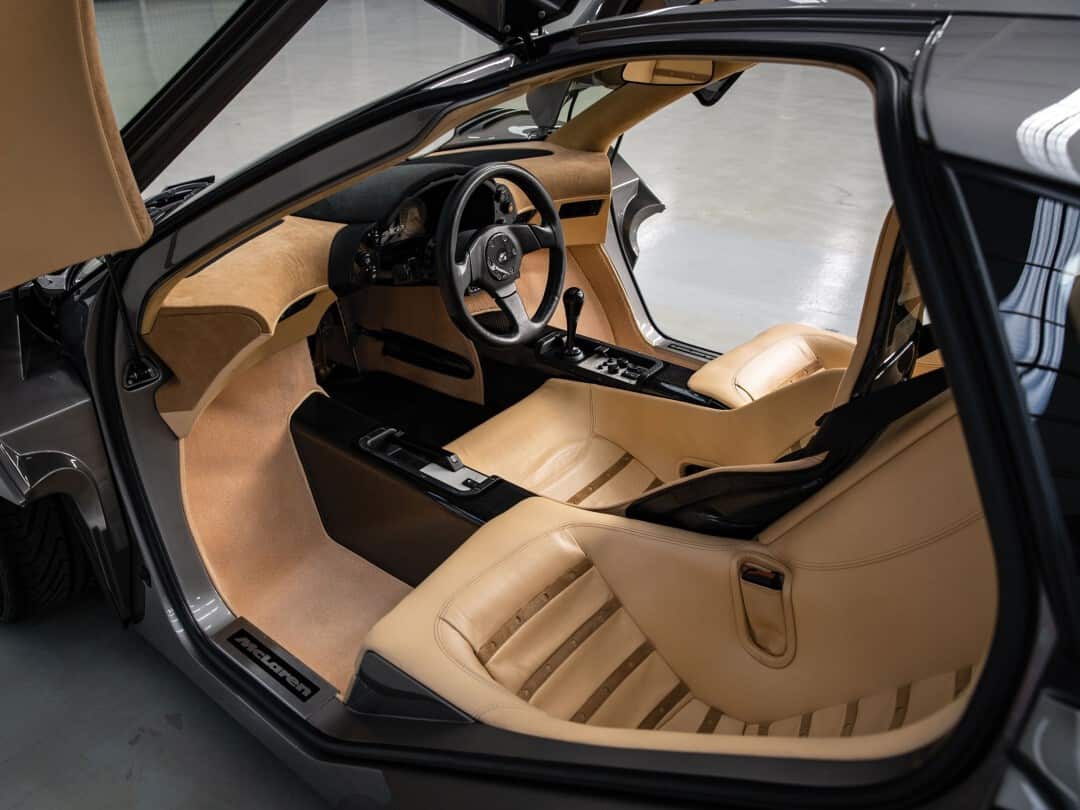
Performance, Handling & Braking
The McLaren F1 set new benchmarks not only in straight-line performance but also in handling precision and braking capability. Engineered with input from Formula 1 racing experience, every element of the F1’s performance package is optimized to provide unparalleled driving dynamics.
Thanks to its exceptionally low weight of just over 1,100 kg and its perfect weight distribution, the F1 delivered agile, responsive, and balanced handling that remains impressive even by modern standards. The innovative suspension system, featuring lightweight aluminum wishbones, advanced dampers, and meticulously tuned geometry, provided extraordinary road-holding and precise steering feedback.
Acceleration figures for the McLaren F1 are equally impressive. The car rockets from 0-60 mph in a mere 3.2 seconds, reaching 100 mph in just 6.3 seconds. This performance was unprecedented at the time, firmly establishing the F1 as a world-class performer.
Braking capabilities were equally groundbreaking. Equipped with Brembo brakes and ventilated carbon-ceramic discs, a pioneering choice at the time, the F1 provided consistent, fade-free stopping power. These advanced brakes allowed the car to slow from high speeds with remarkable stability and confidence, a critical factor given its top speed capabilities.
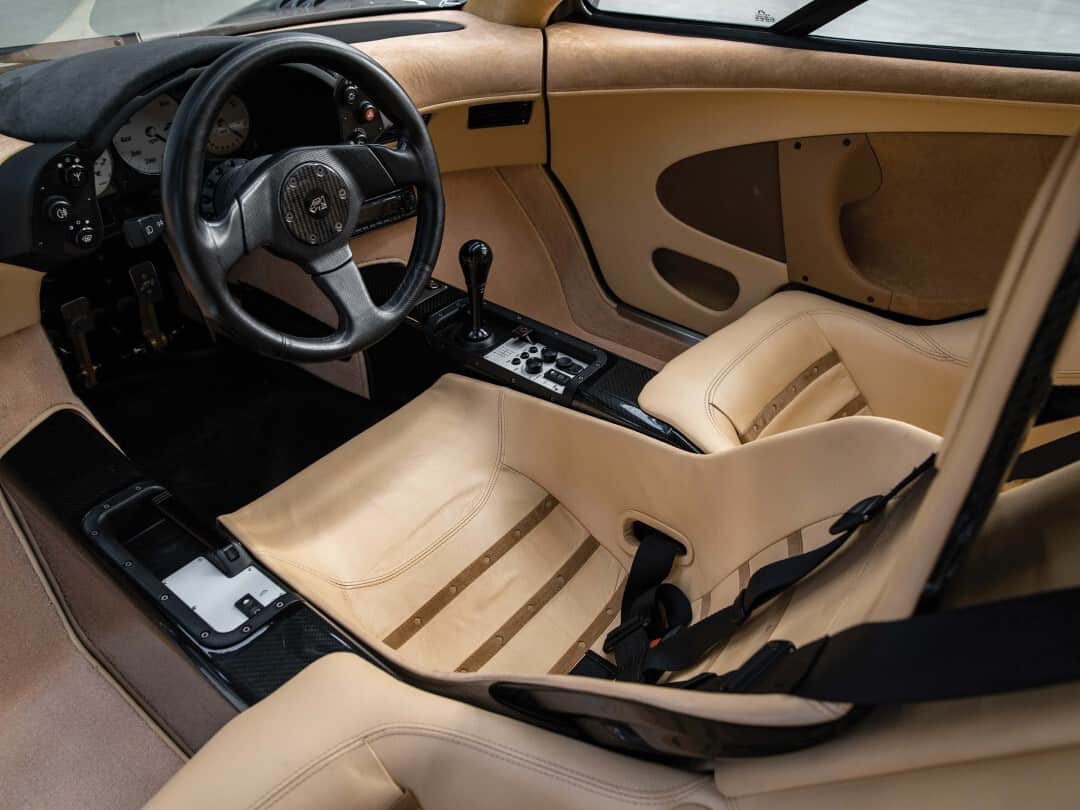
Interior Comfort and Technology
While the McLaren F1 was engineered with a clear focus on performance, it didn’t compromise on comfort or usability—especially considering its era. The cabin strikes a rare balance between minimalist driver-focused ergonomics and premium materials, setting a standard for supercars that few have matched since.
The three-seat layout contributes not only to driving dynamics but also to passenger interaction. With the driver seated in the center and passengers flanking slightly behind on each side, communication within the cabin is intimate and inclusive. It’s a feature that makes the F1 feel more like an aviation cockpit than a conventional car interior.
Each McLaren F1 was tailored to its owner, and that bespoke nature extended to the interior. From the Connolly leather seats and suede-lined trim to the custom-designed luggage set fitted behind the front seats, the level of craftsmanship is exceptional. Even details such as the air conditioning system—unusual in lightweight supercars of the time—were engineered to function effectively without compromising performance.
Despite being focused on speed, the F1 includes a variety of features designed to make long-distance journeys enjoyable. The sound system, developed in collaboration with Kenwood, was lightweight yet high quality. There was even a gold-plated titanium tool kit tucked into the storage compartment, reinforcing the sense of exclusivity and attention to detail.
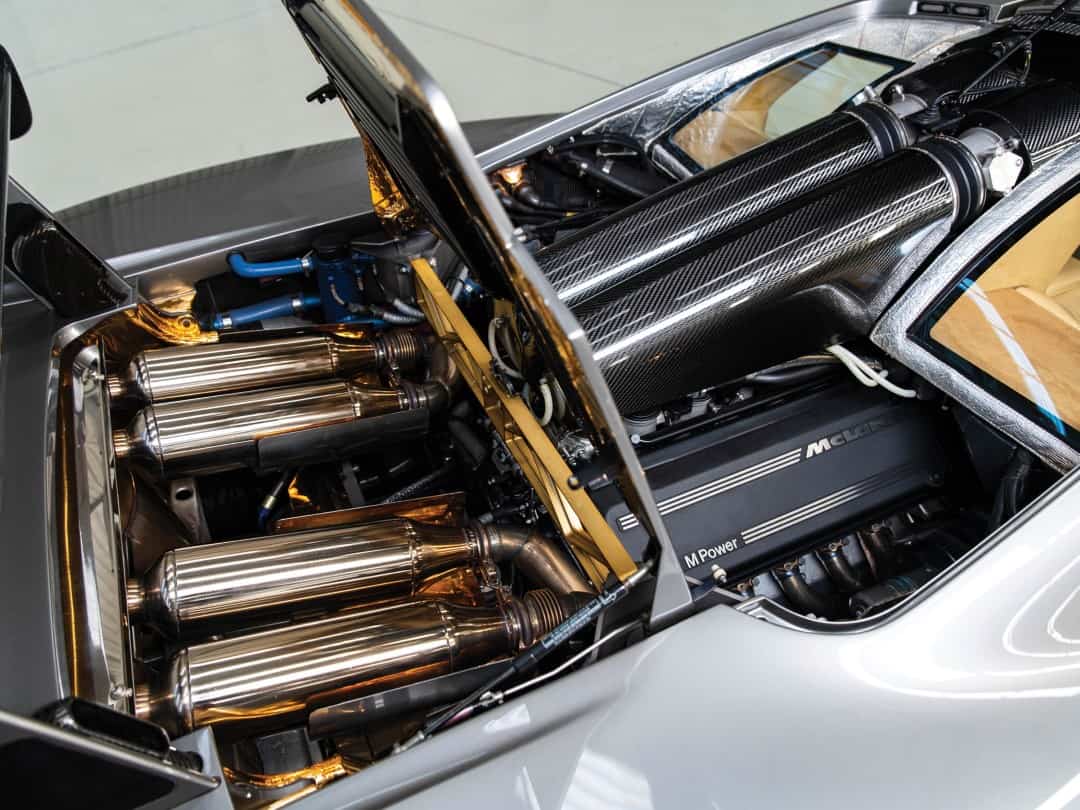
Driving Experience
Driving the McLaren F1 is a sensory experience like no other—raw, visceral, and utterly addictive. Everything about the car has been engineered to heighten the driver’s connection with the machine, and the result is a driving experience that borders on the spiritual.
Slide into the central seat, grip the minimalist steering wheel, and you’re immediately aware that you’re in a machine designed around the driver. The seating position offers a symmetrical view of the road, a balanced feeling through the corners, and a unique sensation of control that simply can’t be matched by conventional left- or right-hand drive layouts.
The naturally aspirated BMW V12 comes alive with a ferocious bark at startup and delivers a glorious, mechanical symphony as the revs climb. With no turbochargers to dull the response, throttle inputs translate immediately into motion. Acceleration is fierce, but always linear and predictable, and the engine rewards drivers who explore its upper limits.
Gear changes are equally tactile. The bespoke six-speed manual transmission demands precision and engagement from the driver. Every shift feels mechanical and connected—there are no electronic buffers or filters between you and the drivetrain. This analog purity is a key reason why the F1 remains so beloved among driving purists.
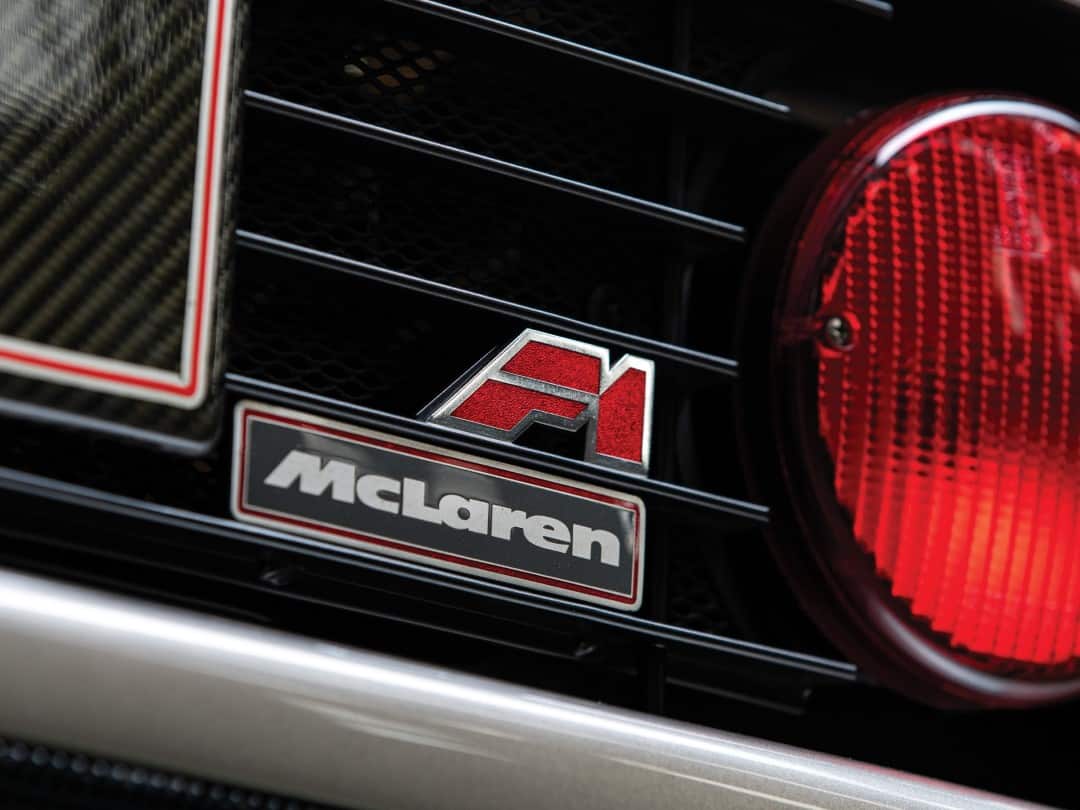
Practicality & Usability
For a car so deeply revered for its performance and exclusivity, the McLaren F1 is surprisingly usable in the real world—especially when compared to modern hypercars. McLaren F1 practicality is one of the car’s most underappreciated qualities, and it’s clear that Gordon Murray considered everyday functionality when designing it.
The three-seat configuration offers more interior space than almost any other supercar of its era. While the outboard passenger seats are slightly recessed, they provide legitimate room and comfort, even on long-distance drives. The central driving position offers unmatched visibility, making daily driving the McLaren F1 more intuitive than one might expect.
Storage is another area where the F1 excels. Unlike many high-performance cars, it features bespoke luggage compartments within the side pods and custom-fitted luggage to maximize usability. Owners have routinely used their F1s for continental road trips—Rowan Atkinson famously racked up over 40,000 miles in his.
Despite its low ride height and stiff chassis, the F1 can handle real-world road conditions better than most of its rivals. The clutch is manageable, the controls are direct, and the lightweight build makes it surprisingly nimble in urban traffic. It may not be your average commuter car, but it was never meant to be locked away either.
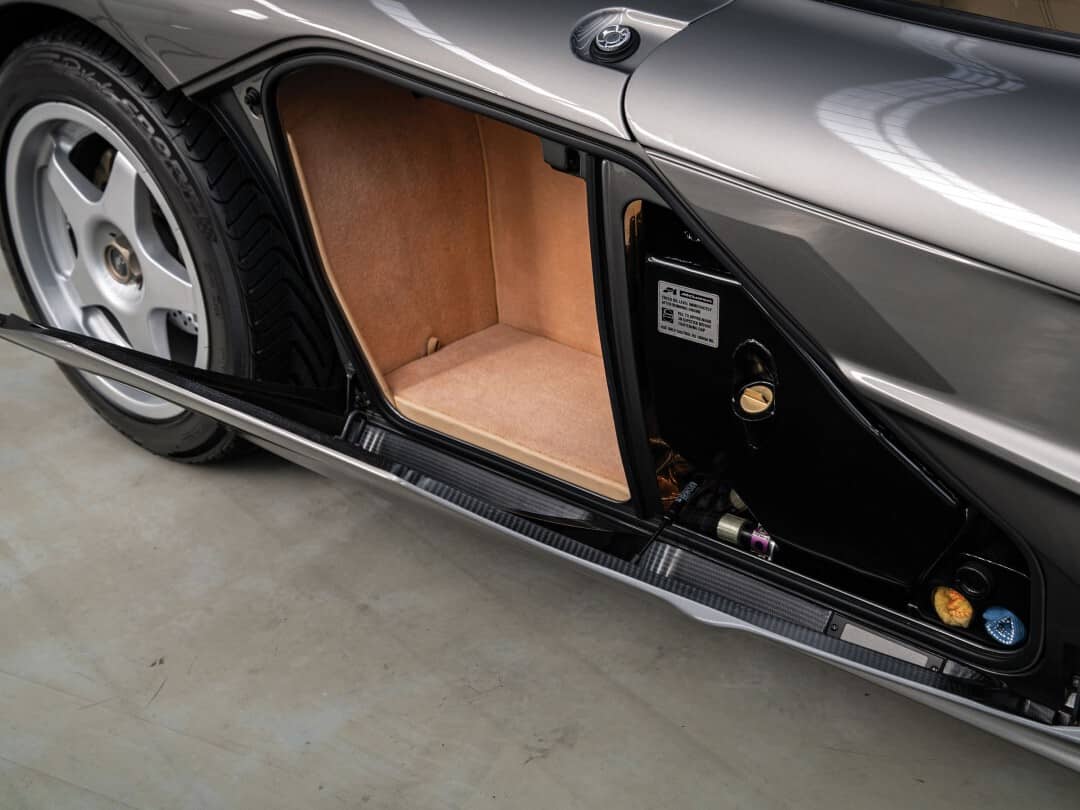
Ownership Experience & Maintenance
Owning a McLaren F1 is often described as a dream come true—but one that requires dedication, patience, and deep pockets. As a rare and historically significant supercar, the F1 demands a unique approach to maintenance and care, quite unlike any modern exotic.
Maintenance costs for the McLaren F1 are steep, even by supercar standards. A routine service, which includes fluid changes and system checks, can easily run into the tens of thousands of pounds. More significant procedures—such as replacing the fuel bladder (which must be done approximately every five years)—can exceed £20,000. Parts availability is limited, and many components must be custom-made or sourced through McLaren’s heritage division.
McLaren Automotive still supports the F1 through a dedicated team of specialists known as the McLaren Special Operations (MSO) Heritage Division. This team is responsible for servicing, restoring, and even upgrading F1s when necessary, often flying technicians around the world to where the cars are located. Only a few authorized facilities globally are equipped to handle the complexities of this engineering masterpiece.
Tyre availability is also a known issue. Bespoke tyres are manufactured in extremely limited batches—roughly once every five years—meaning owners must plan well in advance or stockpile sets. Proper storage and age management are essential for safe use and preserving the car’s performance credentials.
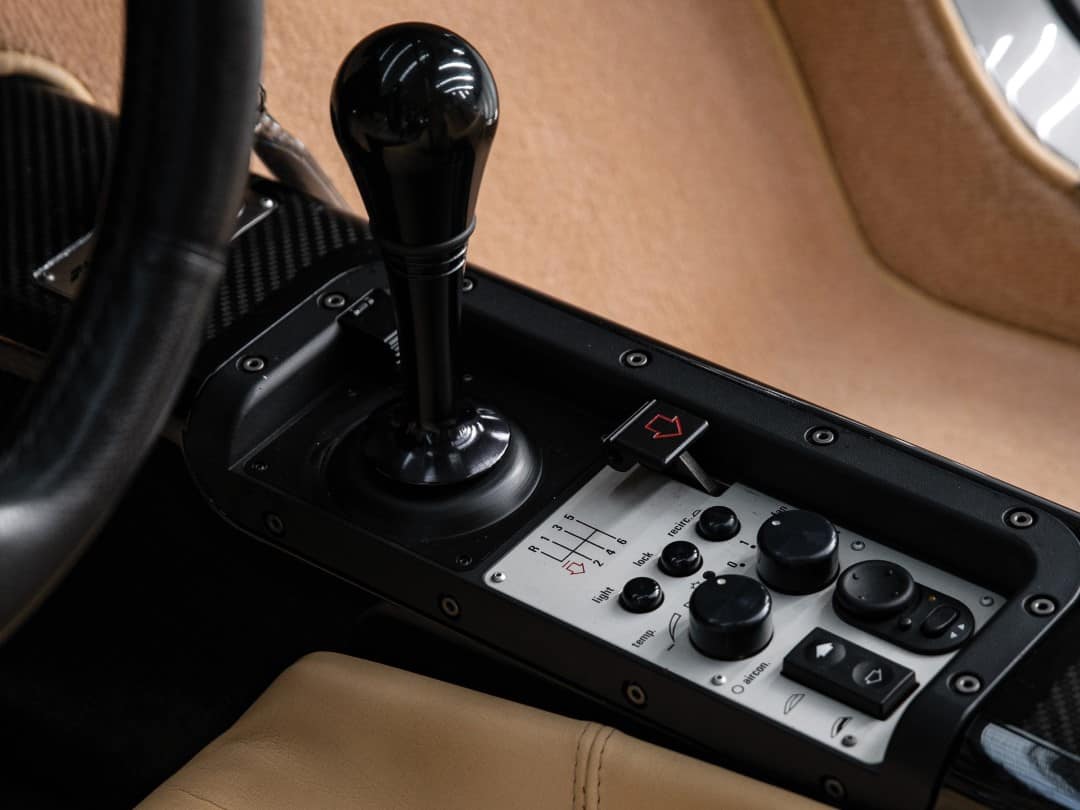
Investment & Market Value
The McLaren F1 has evolved from an engineering marvel to one of the most coveted collector cars of all time. At launch in 1992, the McLaren F1 had a price tag of around $815,000—an astonishing sum at the time for a road car. Yet today, that figure seems trivial when compared to the values these cars now command on the collector market.
Over the past two decades, the F1’s value has skyrocketed. Examples routinely sell for over $20 million, with the most pristine and rare variants demanding even more. In 2021, a McLaren F1 with only 254 miles on the odometer sold for $20.465 million at Gooding & Company’s Pebble Beach auction, setting a new record. Another, a factory-upgraded LM-specification model, brought in $19.8 million in 2019. Even well-driven examples fetch prices north of $15 million, demonstrating the model’s unparalleled status.
This meteoric appreciation is due to several factors. First, the McLaren F1 is exceptionally rare—only 106 were produced in total, of which just 64 are road cars. Its significance in automotive history, as the fastest naturally aspirated production car ever made, further enhances its allure. Add to this its unique engineering, racing pedigree, central driving position, and BMW V12 engine, and the result is a car that offers emotional, historical, and financial value.
Investors and collectors alike view the McLaren F1 as a “blue chip” automotive asset—one that not only delivers jaw-dropping performance and timeless design but also represents a safe store of value. As other cars fluctuate in desirability and prices ebb and flow with trends, the McLaren F1’s trajectory has been consistently upward.
Rarity, unmatched engineering, iconic status, and the analog purity of the driving experience ensure that demand far exceeds supply. Very few owners are willing to sell, and when they do, the market responds with fervor. This scarcity has created a perfect storm of desirability, making the McLaren F1 a cornerstone in the portfolios of the most serious collectors.
Whether seen through the lens of performance, history, or appreciation, the McLaren F1 is not just an icon—it is one of the greatest automotive investments of the modern era.

Famous Owners & Pop Culture Appearances
Few supercars have attracted as many famous owners and cultural accolades as the McLaren F1. Its rarity, performance, and engineering excellence have made it the supercar of choice for celebrities, entrepreneurs, and motorsport legends alike.
One of the most high-profile owners was Elon Musk, who bought an F1 in 1999 after selling his first company, Zip2. Musk famously used the F1 as a daily driver and put over 10,000 miles on it before crashing it—without insurance—during a joyride with investor Peter Thiel. The story became a tech industry legend and added even more mystique to the F1’s already storied status.
British actor Rowan Atkinson, best known for his role as Mr. Bean, also owned a McLaren F1. Unlike many collectors, Atkinson regularly drove his F1, racking up more than 41,000 miles and even crashing it twice. After repairs, he eventually sold it in 2015 for around £8 million ($12 million at the time). His ownership demonstrated that the F1 was not just a trophy—it was a driver’s car.
Jay Leno, a renowned car collector and former late-night host, is another famous McLaren F1 owner. Leno frequently features the F1 on his show, Jay Leno’s Garage, where he lauds its craftsmanship and raw driving experience. Fashion icon Ralph Lauren is rumored to own multiple F1s, including rare variants like the F1 LM and GT, underscoring its appeal among style and design connoisseurs.
Beyond celebrity garages, the McLaren F1 has also left its mark on popular culture. It has been featured in various episodes of Top Gear, often heralded as the greatest car ever built. Its legacy continues to influence the automotive world, frequently cited in documentaries, car reviews, and even music lyrics.
Though it hasn’t appeared in major Hollywood blockbusters—likely due to its rarity and value—the F1 maintains a strong presence in digital media. It’s a fan favorite in racing games like Gran Turismo, Forza Motorsport, and Need for Speed, allowing younger generations to experience its legendary status virtually.
From Silicon Valley moguls to British comedians, the McLaren F1 has captivated some of the most well-known and influential people on the planet. Its appearances in pop culture, combined with its scarcity and beauty, have helped it transcend the supercar niche to become a true cultural icon.
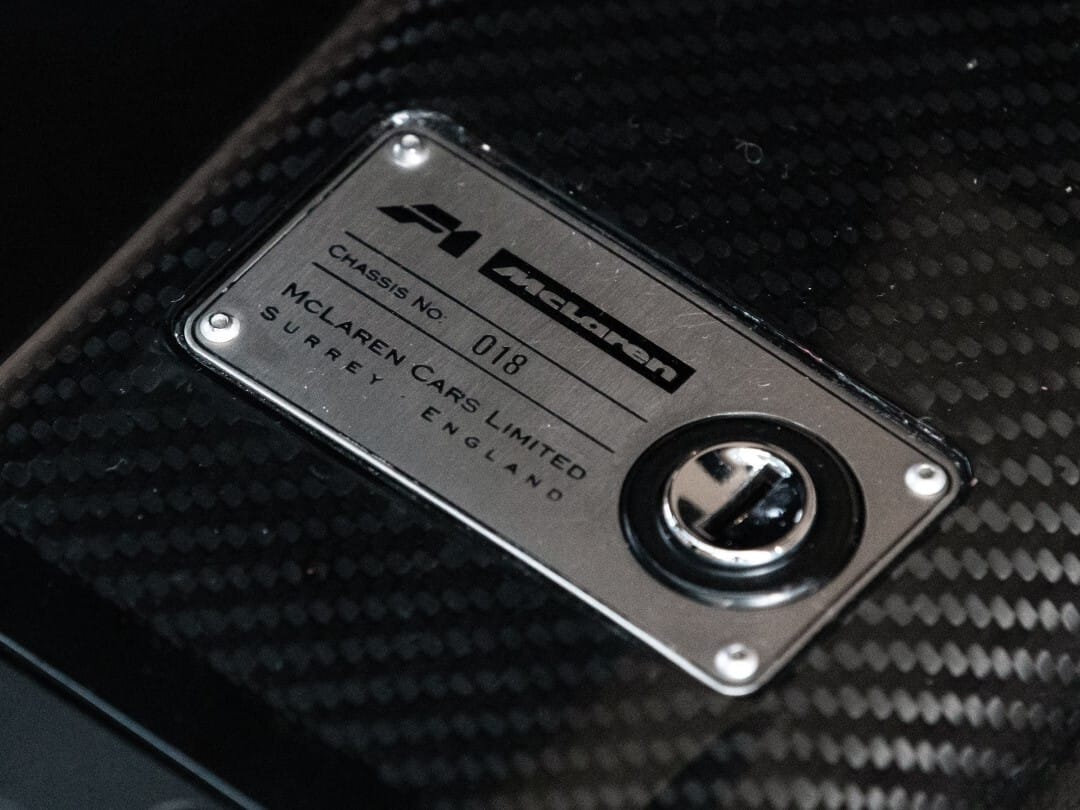
McLaren F1 vs. Modern Hypercars
In a world now dominated by hybrid drivetrains, active aerodynamics, and AI-assisted handling systems, the McLaren F1 remains a benchmark for purity and performance. Comparing the McLaren F1 with modern hypercars like the McLaren P1, Bugatti Chiron, and Ferrari LaFerrari reveals a car that, despite its age, still stands apart in terms of engagement, philosophy, and historical significance.
Let’s start with the McLaren P1—the spiritual successor to the F1. The P1 uses a twin-turbo V8 engine paired with an electric motor, producing over 900 horsepower. It’s blisteringly fast and packed with futuristic tech, including active suspension and torque vectoring. However, many enthusiasts argue that the P1 lacks the mechanical connection of the F1. Where the P1 is a spaceship, the F1 is a scalpel—precise, raw, and unfiltered.
The Bugatti Chiron, another contender in the hypercar arms race, boasts a quad-turbocharged W16 engine producing a staggering 1,479 horsepower and a top speed of over 261 mph. It dwarfs the F1’s 627 horsepower on paper. Yet, the Chiron weighs over 1,900 kg—almost double the F1. The F1 still holds the crown as the fastest naturally aspirated production car in history, with a top speed of 240.1 mph. Its focus on lightness, balance, and driver input offers a different kind of thrill—one that connects you to the road rather than insulating you from it.
The Ferrari LaFerrari represents another leap in hybrid supercar performance, blending V12 power with electric augmentation. It’s ferociously fast, visually stunning, and technologically brilliant. But once again, it relies on computers to manage its power delivery, suspension, and traction. The McLaren F1, devoid of driver aids, demands skill and rewards competence. It’s a car that teaches you something every time you drive it.
What truly sets the F1 apart is its analog soul. There’s no traction control, no ABS, no paddle shifters—just a driver, a perfectly balanced chassis, and a howling V12. It’s this purity that modern hypercars struggle to replicate. While they may surpass it in outright numbers, they can’t capture the emotional connection or tactile feedback that makes the F1 unforgettable.
Even in the eyes of collectors, the F1 eclipses its successors. While cars like the P1 and LaFerrari are still depreciating or stabilizing in value, the F1 continues to appreciate, reinforcing its stature as an automotive legend.
In the battle of classic vs modern supercars, the McLaren F1 isn’t just competitive—it’s defining. It represents a high-water mark in engineering, free from regulatory constraints and marketing gimmicks, and its legacy continues to influence every serious performance car that followed.

Frequently Asked Questions (FAQ)
How many McLaren F1 road cars were made?
McLaren produced just 106 F1s between 1992 and 1998, with only 64 built as road cars. The remainder included prototypes, track-only GTR models, and ultra-rare LM and GT variants. This extreme scarcity is one of the key factors behind the car’s desirability and skyrocketing value.
What makes the McLaren F1 so valuable?
The F1’s value is rooted in a perfect storm of rarity, innovation, and legacy. It was the first production car to use a full carbon-fiber monocoque, featured a unique center-seat configuration, and remains the fastest naturally aspirated production car ever made. Its analog nature, combined with the BMW V12 engine and unmatched driving experience, makes it a high-demand asset in the collector market. Add to that McLaren’s racing heritage and Gordon Murray’s uncompromising vision, and you get one of the most desirable machines ever built.
Can you still buy a McLaren F1 today?
Yes—but it’s no easy task. McLaren F1s rarely come up for sale, and most transactions happen privately through brokers or major auction houses. When they do appear, prices easily exceed $20 million for low-mileage or unique-spec examples. Buyers need deep pockets and excellent connections in the collector car world to even be considered.
Is it legal to drive a McLaren F1 on public roads?
Absolutely. All road-going McLaren F1s were designed and built to meet global road regulations at the time, including crash safety and emissions. In the U.S., however, some cars are imported under the Show and Display law, which limits annual mileage but still allows owners to enjoy them on public roads.
Is the McLaren F1 difficult to maintain?
Yes, and it’s part of what makes ownership so exclusive. Routine servicing must be performed by McLaren Special Operations (MSO), which has a dedicated heritage division for the F1. Parts are scarce, bespoke, and expensive. The fuel tank bladder, for example, must be replaced every 5 years, at a cost of around £20,000. Tyres are produced in batches every few years, requiring advance planning. Still, many owners say the driving rewards far outweigh the upkeep.
Why doesn’t it have traction control or ABS?
Because Gordon Murray wanted it that way. The F1 was designed as the ultimate driver’s car—free of digital interference. This decision created a machine that responds purely to the driver’s input. It’s harder to drive, but infinitely more rewarding for those who know how.
Will the McLaren F1 keep appreciating in value?
All indicators suggest yes. The combination of rarity, provenance, engineering significance, and cultural cachet makes it a long-term asset for serious collectors. As the market shifts toward electric and hybrid vehicles, the F1’s analog nature and historic achievements are likely to become even more coveted.
Whether you’re curious about ownership, performance, or investment potential, the McLaren F1 continues to raise eyebrows and set records—making it not just a car, but a legend with few equals.
Conclusion
The McLaren F1 is more than just a car—it’s the embodiment of engineering genius, the pinnacle of analog performance, and the manifestation of a singular, uncompromising vision. From its center-seat layout and gold-lined engine bay to its record-breaking top speed and the purity of its driving dynamics, the F1 remains in a league of its own.
Over thirty years since its debut, it is still celebrated as one of the greatest supercars ever made. Modern hypercars may eclipse its performance figures on paper, but none have matched its legacy, character, or emotional impact. It’s this analog purity, built without traction control or driver aids, that continues to captivate drivers and collectors alike. It isn’t just about numbers—it’s about soul.
The F1’s influence can be felt across McLaren’s entire road car lineup and throughout the supercar industry. It set benchmarks in materials, layout, and ambition that are still chased today. Its value as an investment reflects its importance—not only in terms of monetary appreciation but in the deep respect it commands from enthusiasts, engineers, and historians.
If you’re fascinated by the F1, explore more about it here at SupercarTribe.com. From buyer’s guides to rare listings and in-depth features, we celebrate icons like the F1 every day. Who knows—your next dream car might just be one click away.

